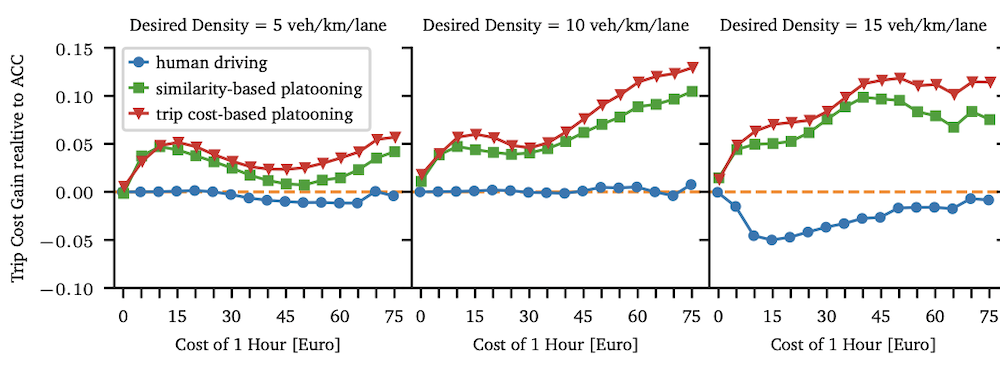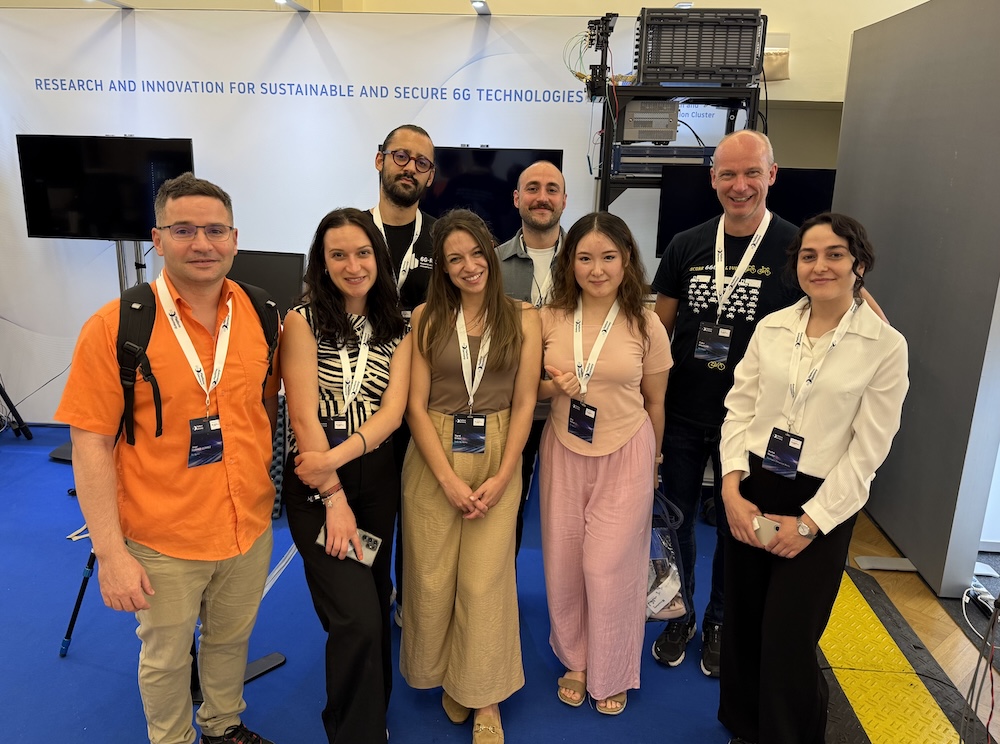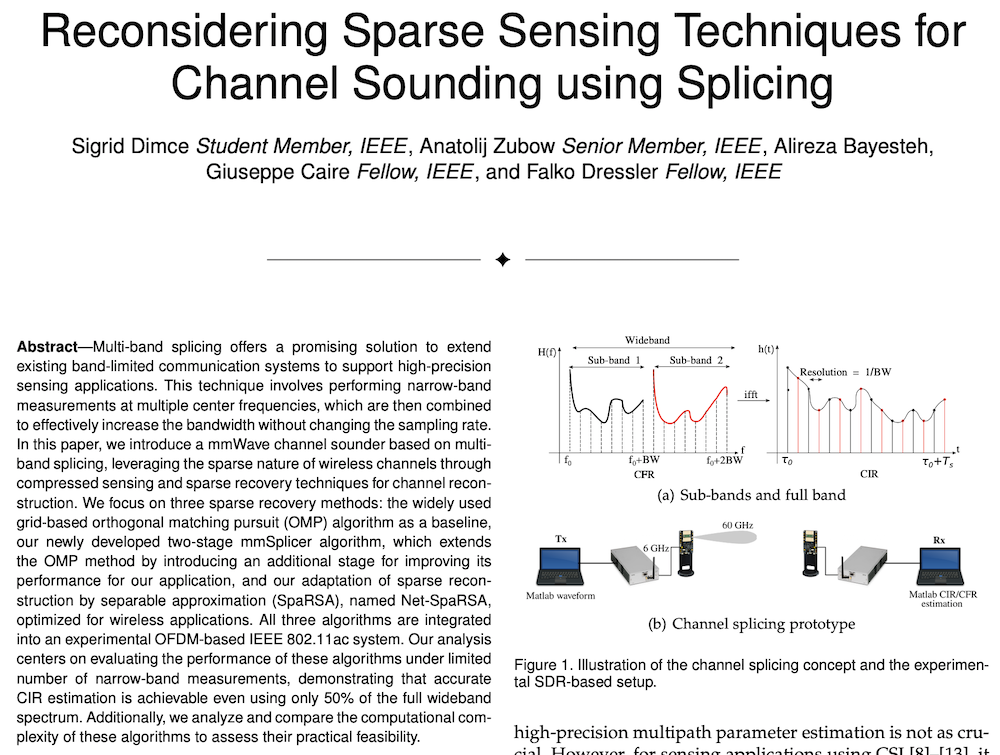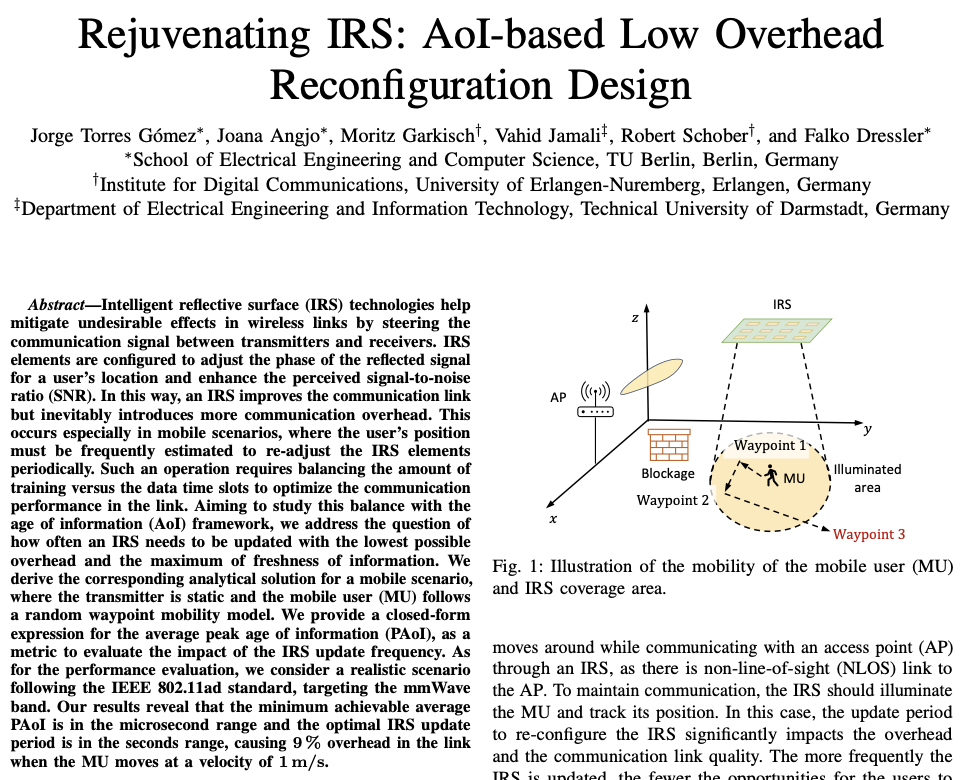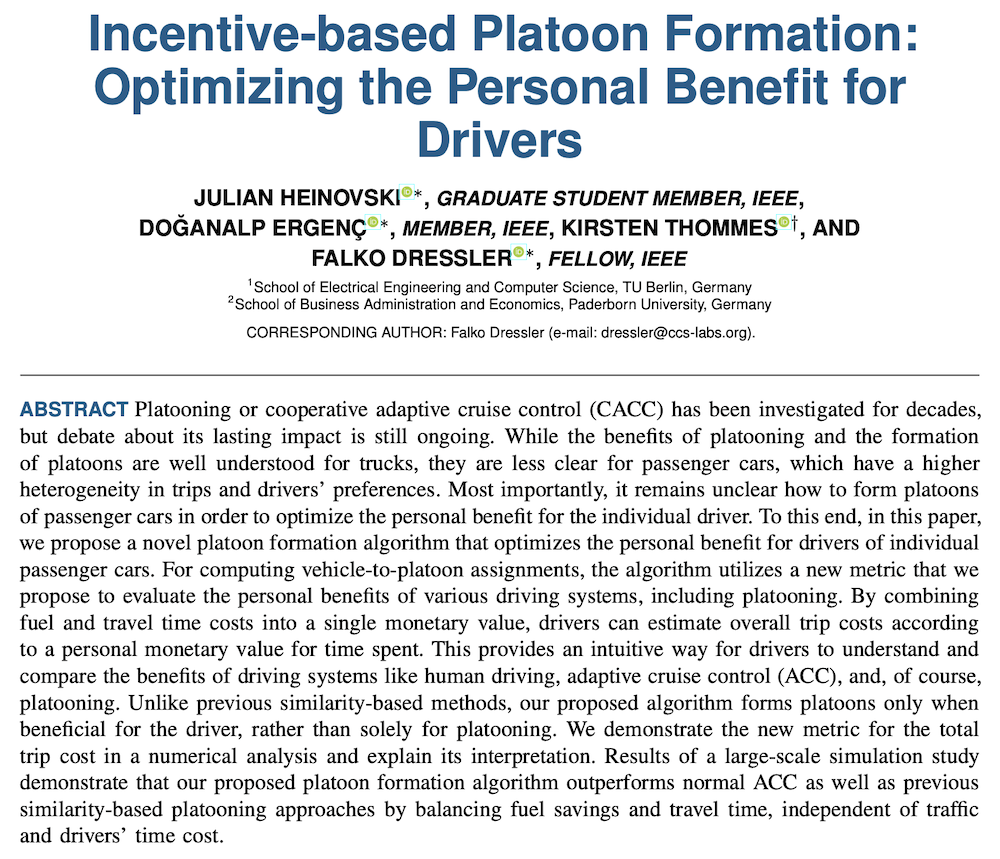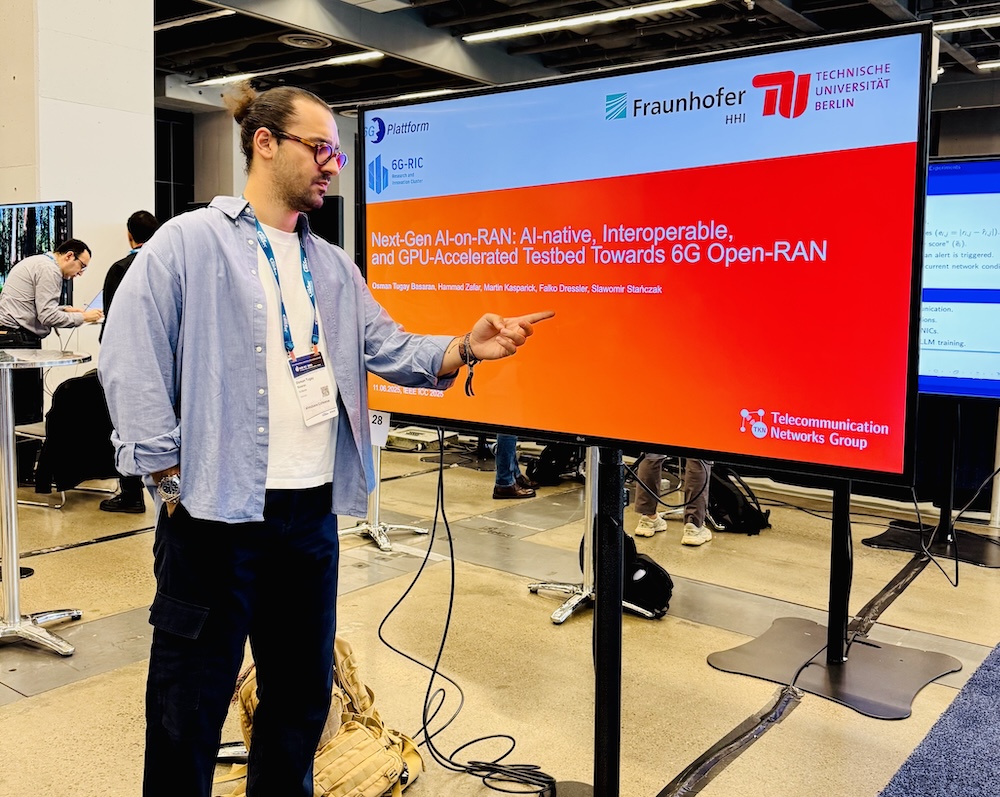Literature Database Entry
bloessl2015power
Bastian Bloessl, Christoph Sommer and Falko Dressler, "Power Matters: Automatic Gain Control for a Software Defined Radio IEEE 802.11a/g/p Receiver," Proceedings of 34th IEEE Conference on Computer Communications (INFOCOM 2015), Demo Session, Hong Kong, China, April 2015, pp. 25–26.
Abstract
Software Defined Radios (SDRs) have become a fundamental building block for research on wireless networks. Yet, using this platform for experiments in the field is hindered by many practical difficulties, an important one being the need for Automatic Gain Control (AGC). We demonstrate a way of implementing an AGC algorithm directly in the FPGA where we are able to meet tough timing constraints. This allows using SDRs not just for lab experiments but also for measurement campaigns or deployments in the field. With extending our GNU Radio-based Open Source stack for IEEE802.11a/g/p WLAN with AGC, we provide an SDR platform that can be integrated into existing WiFi networks just as well as into future vehicular networks.
Quick access
Original Version ![]() (at publishers web site)
(at publishers web site)
Authors' Version ![]() (PDF on this web site)
(PDF on this web site)
BibTeX ![]()
Contact
Bastian Bloessl
Christoph Sommer
Falko Dressler
BibTeX reference
@inproceedings{bloessl2015power,
author = {Bloessl, Bastian and Sommer, Christoph and Dressler, Falko},
doi = {10.1109/INFCOMW.2015.7179325},
title = {{Power Matters: Automatic Gain Control for a Software Defined Radio IEEE 802.11a/g/p Receiver}},
pages = {25--26},
publisher = {IEEE},
address = {Hong Kong, China},
booktitle = {34th IEEE Conference on Computer Communications (INFOCOM 2015), Demo Session},
month = {4},
year = {2015},
}
Copyright notice
Links to final or draft versions of papers are presented here to ensure timely dissemination of scholarly and technical work. Copyright and all rights therein are retained by authors or by other copyright holders. All persons copying this information are expected to adhere to the terms and constraints invoked by each author's copyright. In most cases, these works may not be reposted or distributed for commercial purposes without the explicit permission of the copyright holder.
The following applies to all papers listed above that have IEEE copyrights: Personal use of this material is permitted. However, permission to reprint/republish this material for advertising or promotional purposes or for creating new collective works for resale or redistribution to servers or lists, or to reuse any copyrighted component of this work in other works must be obtained from the IEEE.
The following applies to all papers listed above that are in submission to IEEE conference/workshop proceedings or journals: This work has been submitted to the IEEE for possible publication. Copyright may be transferred without notice, after which this version may no longer be accessible.
The following applies to all papers listed above that have ACM copyrights: ACM COPYRIGHT NOTICE. Permission to make digital or hard copies of part or all of this work for personal or classroom use is granted without fee provided that copies are not made or distributed for profit or commercial advantage and that copies bear this notice and the full citation on the first page. Copyrights for components of this work owned by others than ACM must be honored. Abstracting with credit is permitted. To copy otherwise, to republish, to post on servers, or to redistribute to lists, requires prior specific permission and/or a fee. Request permissions from Publications Dept., ACM, Inc., fax +1 (212) 869-0481, or permissions@acm.org.
The following applies to all SpringerLink papers listed above that have Springer Science+Business Media copyrights: The original publication is available at www.springerlink.com.
This page was automatically generated using BibDB and bib2web.

